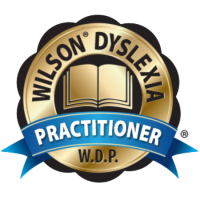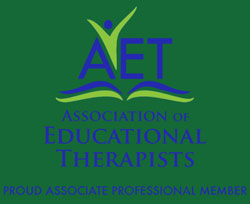Strategies for Efficient Studying
This Month we are focusing on Strategies for Efficient Studying and Writing Accommodations With Writing Remediation— Why Our Students Need Both…
 Dear Families,
Dear Families,
At one time or another, every parent has experienced this… Your child has a test the next day…He appears to know the information, but when it comes time to take the test, he has forgotten the information and comes home feeling defeated.
This can happen when students work hard to memorize study guides word-for-word.
They think they know, but when the question is framed differently on the test, they don’t recognize it.
The truth is, many students have not learned HOW to study. And the assumption is that they already know.
Rather, most students use one of these strategies:
- Read and reread the same chapter and/or study guide in hopes that they can memorize the information.
- Ask their parents to read to them.
- Cross their fingers and hope for the best.
- Avoid studying altogether because it is overwhelming.
These strategies often only work for a short period of time and do not lend themselves to a deeper understanding of the content.
Below are some strategies to promote a deeper understanding of the subject-matter.
Clarise Lyon, Director
Comprehension, Memory, and Learning New Concepts Using Flashcards:

How do you make a flash card?
- Use index cards or paper cut into rectangles to create. Write down a word (key term, important person/place, or vocabulary) on one side of the card.
- Write the meaning or importance of the person/place on the other side of the card.
Visit www.quizlet.com to create flash cards also.
When can students use the flash cards?
- The bus or car ride home.
- If an assignment is completed early in class.
- Each night for a set amount of time.
Place flashcards on a doorway or mirror where they will be seen frequently.
Diagram Using Index Cards
Using different colored markers to delineate: dates, vocabulary, main ideas, supporting details, and so forth, put important information on index cards. Together with your learner, organize the cards in a sequential way and have him explain how the ideas are connected. Be sure to mix up the cards and have your learner sequence the ideas in a different way that still makes sense and explain the organization and why the ideas are connected.
This will help your learner to rephrase the information in different ways to generalize ideas and understand the connection between ideas versus memorization.

George Washington – Sequential Order by Date

George Washington – T-Chart
Flashcards and Games
Flash cards can be any facts that need review: alphabet, phonics, sight words, math (addition, subtraction, multiplication, division, fractions, etc).
Index cards and sticky notes operate like the playing cards, counters and other game components: they make it easy to sort, shuffle, arrange and rearrange information—they bring logic and order to a space, allowing it to serve as a base for exploring combinational possibilities.
You can make a matching game for almost any subject. Make separate cards for the questions and the answers, leaving the back sides blank. Place the cards face down and turn them over, one by one, trying to find matches.

Vocabulary Cards
Have your learner write the vocabulary word on the side of the index card with no lines and the definition of the vocabulary word on the side with lines. When studying, your learner can make a small check mark on the corner of the vocabulary word cards they know. When they have made two or three marks on a card, they can put it in a separate pile. They should go through the main pile until all cards have two or three marks.

Index Card Fractions
Think of an index card as one whole. You can also think of its dimensions as a 1 x 1 array.

When making “halves” fold one short edge over the other short edge to help your learner understand what “one-half” looks like.

By folding the “halves” in half your learner can begin to get the idea of equivalent fractions…

Again, by folding “fourth” in half, your learner begins to see that with more parts, the fractional pieces get smaller.

Folding the “halves” in three pieces shows that 3/6 is also equivalent to 1/2. The fractions look different but represent the same array.
Accommodation Plus Remediation–Why Our Students Need Both
It is not uncommon for writing to lag behind reading. This is because handwriting involves the integration of many skills including orthographic coding (spelling rules), finger function, visual motor integration, eye/hand coordination, visual perception, organization, ideation and language ability.
According to the Journal of Psychology, 2008 Writing Problems in Developmental Dyslexia: Under-Recognized and Under-Treated. “Children with dyslexia should be screened for writing problems or dysgraphia and if at risk given early intervention and monitored for writing progress.” In other words, accommodation needs to be accompanied with remediation to improve the skills.
What is dysgraphia?
“Dysgraphia is a condition that causes trouble with written expression. The term comes from the Greek words dys (“impaired”) and graphia (“making letter forms by hand”). Dysgraphia is a brain-based issue. It’s not the result of a child being lazy–
For many children with dysgraphia, just holding a pencil and organizing letters on a line is difficult…”. https://www.understood.org/en/learning-attention-issues/child-learning-disabilities/dysgraphia/understanding-dysgraphia
For more information about accommodations/remediation, diagnosis of dysgraphia, and ways to support writing at home–see links below.

A List of General Accommodations to Help Students with Writing
Amount of Writing
- Provide a lesson outline for taking notes.
- Request a scribe so the student can dictate tests and writing assignments.
- Grade based on student knowledge, not handwriting or spelling.
- Hand out worksheets so there’s less to copy from the board.
Speed Writing
- Give the student extra time to take notes, copy material and take tests
- Provide typed copies of class notes
- Allow the student to record certain class sessions.
- Allow the student to start writing projects and assignments early.
- Provide paper with name, date, title, etc…, already filled in.
Difficulty
- Give examples of finished assignments.
- Help the student break the assignments into steps.
- Help the student learn to use a rubric and explain how each step is graded.
Writing Mechanics
- Let the student choose to use print or cursive.
- Have the student try different types of writing tools to see what works best.
- Have the student use graph paper to line up math problems.
- Provide the student use paper with raised lines to help with forming letters in the right place.
The difference between accommodations, modifications, and remediation:
http://heathersopendoor.blogspot.com/2012/10/accommodation-modification-and.html
Ideas for parents to encourage writing at home:
http://www.greatschools.org/gk/articles/tips-to-support-writing-at-home/
Writing Issues & Dysgraphia Basics:
https://www.understood.org/en/community-events/blogs/expert-corner/2014/10/20/how-to-get-a-diagnosis-of-dysgraphia





